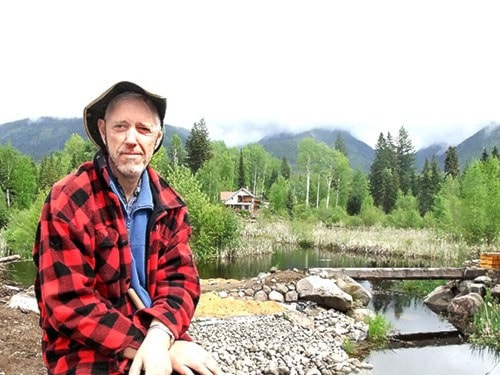CLEARWATER – “This will be the biggest thing I do in my life,” Trevor Goward said.
The Upper Clearwater resident was referring to Wells Gray World Heritage Year, which he has taken a lead role in organizing, along with Tom Dickinson, dean of science at Thompson Rivers University.
The year of events, which began last fall, seeks to raise public awareness of the unique features of Wells Gray Park that qualify it to become a World Heritage Site.
First event of 2013 will be a presentation by well known B.C. writer and filmmaker Wade Davis at Clearwater Secondary School on Thursday, May 30. Tickets were still available as of press-time.
The following day, May 31, Davis will participate in a ribbon cutting at Upper Clearwater Community Hall (25 km north of the Infocenter on the road to Wells Gray Park) at 11 a.m. to mark the official start of construction on the Thompson Rivers University Wilder-ness Field Station.
After the ceremony, people will be invited to walk across the road to Trevor Goward’s property, Edgewood Blue.
Goward said he intends to essentially donate the property as a wildlife corridor and nature interpretive center.
It was to have gone to the Land Conservancy of B.C., but that organization’s financial troubles have forced a change of plans.
The world faces a major climate crisis with such things as global climate change, Goward felt.
“So, what is to be done?” he asked. “It seems a hopeless, hard, huge thing.”
The key is to change people’s attitudes, he felt.
People, and in particular young people, need to re-connect with nature and learn how eco-systems work.
With this in mind he has been working to make his property into more of a nature interpretive center.
Many people have helped, but he felt Jen Belle and Brett Colborne were two names that deserve special mention.
A trail along one side of the property has been widened into a wheelchair-accessible walkway.
Stations along the walkway will illustrate various lessons from ecology. For example, the Edgewood Petrie Dish will be a large pie-shaped circle with eight segments. Each segment will have a different type of soil, and what seeds germinate and grow in those soils will show the effect of substrate on the ecosystem.
At the end of the walkway a bridge will lead out onto Bird Island, where a naturalist will offer free interpretive sessions during the summer. There will be no charge to participate but donations will be accepted.
An interpretive center on his property would complement Thompson Rivers University’s Wells Gray Wilderness Center being constructed across the road, Goward said.
It also ties in with the goals of Wells Gray World Heritage Year.
One of the reasons the provincial government created Wells Gray Park 74 years ago was to protect the mountain caribou, he said.
Beginning in 1950 scientists (most notably Ralph Ritcey) looked at the park and its wildlife systematically, until it was the most studied park in B.C.
The caribou rebounded somewhat but are now in a second decline. The latest survey showed there are only about 60 left, compared to an estimated 700 before the fires during the early part of the last century.
“Once the mountain caribou are gone, they’re gone,” Goward said. “Do we care as a community about the caribou and the wilderness values of Wells Gray?”
